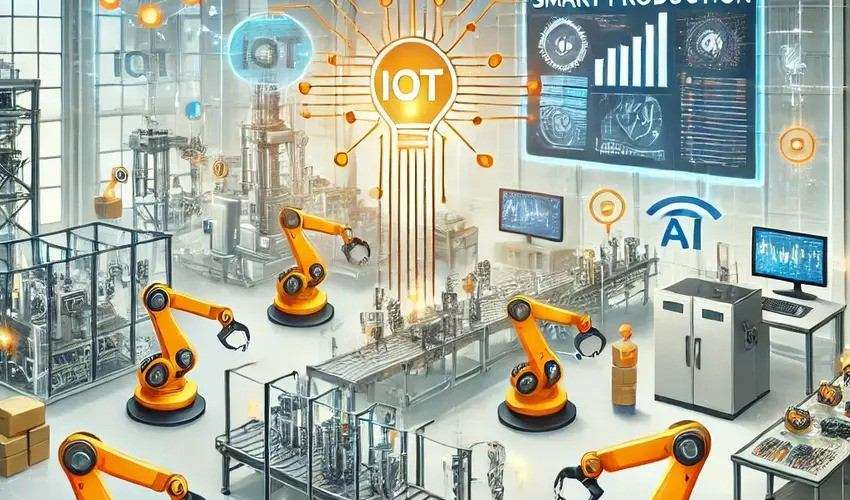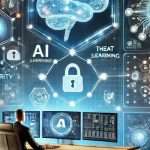In the fast-changing world of manufacturing, Smart Production is a game-changer. This transformation is key. It relies on the Internet of Things (IoT) and Artificial Intelligence (AI) technologies. Together, they are revolutionizing traditional manufacturing. They enable greater efficiency, cut costs, and improve product quality. This article explores the key role of IoT and AI in Smart Production and explains how these techs are shaping the future of making things.
Understanding Smart Production
Smart Production refers to the use of advanced technologies to optimize manufacturing processes. It involves connecting IoT devices, AI algorithms, and data analytics. This creates a very efficient, flexible, and responsive production environment. This approach lets manufacturers monitor and control their operations in real-time. They can make informed decisions that improve productivity and quality.
The Internet of Things (IoT) in Smart Production
IoT is crucial in Smart Production. It connects devices, machines, and systems in a factory. The devices are connected. They collect and share data. They give valuable insights into the production process.
Key Contributions of IoT
- IoT devices have sensors. They can monitor machinery, equipment, and conditions in real time. This data stream lets manufacturers spot anomalies, help prevent equipment failures, and ensure good conditions.
- IoT enables predictive maintenance. It does this by analyzing sensor data to predict when equipment will fail. This approach reduces downtime, makes machinery last longer, and cuts maintenance costs.
- IoT devices can track and analyze production, ensuring that products meet quality standards. This real-time quality control helps find defects early, reduce waste, and ensure consistent product quality.
- Supply Chain Optimization IoT provides end-to-end visibility of the supply chain. It lets manufacturers track inventory, manage logistics, and optimize production schedules. This transparency improves efficiency and reduces the risk of supply chain disruptions.
Artificial Intelligence (AI) in Smart Production
AI complements IoT. It provides the analysis needed to make sense of the vast data IoT devices generate. AI algorithms can spot patterns, predict outcomes, and improve processes, leading to smarter choices and better production.
Key Contributions of AI
- AI can forecast demand, optimize inventory, and plan production. Manufacturers can reduce overproduction and stockouts by predicting market trends and customer preferences, leading to big cost savings.
- AI algorithms can analyze production data. They use it to find inefficiencies and suggest improvements. This continuous optimization ensures that manufacturing processes run at their best, reduce waste, and lower costs.
- QA AI can improve quality assurance by analyzing data from many stages of production. Algorithms can find defects humans can’t see. They ensure better quality and cut rework.
- Robotics and Automation AI-driven robots and automated systems are transforming manufacturing floors. The robots can do complex tasks well, with precision and consistency. This speeds up production and reduces human error. AI enables these systems to learn and adapt. This improves their performance more over time.
Integrating IoT and AI for Smart Production
The true potential of Smart Production is realized when IoT and AI are integrated. This combination allows manufacturers to create a fully connected and intelligent production environment.
Case Study: Smart Production in Action
Consider a factory producing automotive parts. The sensors are on the production line. They monitor machine performance and capture data on temperature, vibration, and output rates. This data is sent to a central AI system that analyzes it in real-time.
The AI system detects a worn-out machine and predicts it will fail in the next 48 hours. It alerts the maintenance team, who makes the needed repairs during scheduled downtime. This prevents an unexpected breakdown.
At the same time, the AI system analyses production data to find a bottleneck in the assembly process. It suggests reconfiguring the workflow, which the production manager implements. This change increases the production rate by 15%. It shows the power of combining IoT and AI in Smart Production.
Benefits of Smart Production
The integration of IoT and AI in Smart Production offers numerous benefits, including:
- Smart Production increases efficiency. It does this by optimizing processes and cutting downtime.
- Costs are cut by predictive maintenance. It also comes from better inventory management and less waste.
- We use real-time monitoring and AI-driven quality control. They make sure that products meet the highest standards.
- It allows manufacturers to adapt quickly to changes in demand, production needs, and market conditions.
- Data from IoT and AI helps make better strategic and operational decisions. It drives business success.
Challenges and Future Outlook
Smart Production has clear benefits. However, using these technologies comes with challenges. These include the high start-up cost, skilled staff, and worries about data security. However, these barriers will likely diminish as technology advances and costs decrease.
The future of Smart Production looks bright. IoT and AI will advance further and drive further innovation. More makers are adopting this tech. We expect a new era of efficient, responsive, smart production systems.
Conclusion
The role of IoT and AI in Smart Production cannot be overstated. These technologies are changing manufacturing. They let companies reach new levels of efficiency, quality, and flexibility. By using IoT and AI, manufacturers can handle modern production challenges. They are paving the way for a better and greener future. As we move forward, embracing Smart Production is key to staying competitive. It will help us meet the ever-changing demands of the market.



